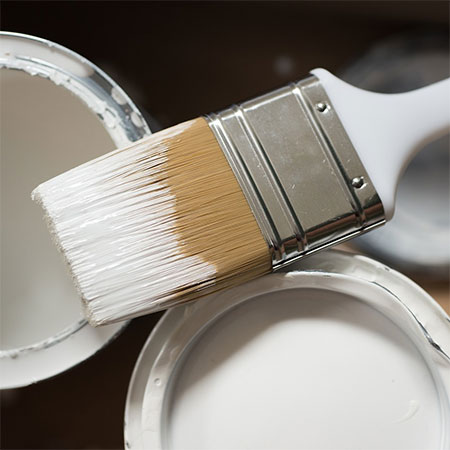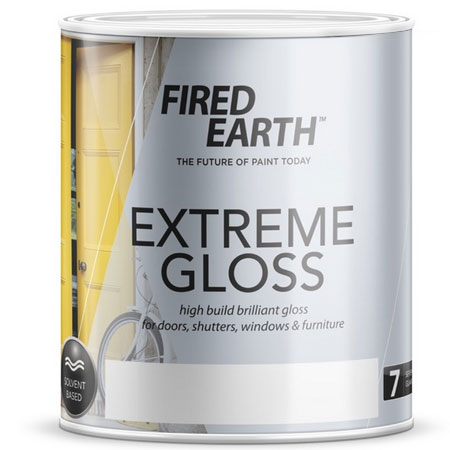Can Paint Be Eco-Friendly?
Just finished painting the ceiling in my bedroom and gagging on the smell for two days, despite a label that says the paint I purchased is eco-friendly.
17/01/2021
"Just finished painting the ceiling in my bedroom and gagging on the smell for two days, despite a label that says the paint I purchased is eco-friendly." This is a comment that I received yesterday from a reader, Valerie Friedman, and I decided to dig a little deeper into this contentious topic. I have, for many years, touted the benefits of using eco-friendly or low-VOC paints yet many still do not understand how this works and why low-VOC or VOC-free paints are better.
HOW ECO-FRIENDLY CAN PAINT BE?
When you think about the chemicals that go into paint, no paint can truly be eco-friendly unless it is manufactured using organic or natural materials. There are even milk paints out there that are anything but eco-friendly. So what criteria is involved in classifying a paint as eco-friendly?
Firstly, hats off to those paint companies that are doing their best to make their product more eco-friendly, even if it is only in the manufacturing process and packaging and not the product.
Paint companies have a difficult task, similar to that of all manufacturers that use chemicals, solvents and VOCs. You can't manufacture paints without chemical ingredients but you can ensure the process of doing it at least has minimal impact on the environment.
WHAT IS IN PAINT THAT IS NOT ECO-FRIENDLY?
Most paint products manufactured these days contain a host of elements that are not in the slightest considered eco-friendly. Acrylic paint, one of the most popular paints on the market today, consists of silicon oils, plasticizers and acrylic polymers. All chemical-based, in their solid form - once the paint dries - these chemicals for a barrier or painted surface. Although, having said that, there are experts that say some paints only off-gas about 50 per cent of their VOC content in a year, the rest continuing to evaporate over time.
Before the chemicals harden, however, the state of the paint as it is wet is one that contains VOCs or Volatile Organic Compounds. These chemicals are released into the atmosphere (air in your home) and off-gas into the air until they have vaporized or the paint has hardened. The level of VOCs released during off-gassing determines the VOC factor of the paint product.
The illnesses and diseases related to VOC products range from several VOC compounds that have been linked to various types of cancers to liver and kidney damage and ill effects on the central nervous system.
Common VOCs used in manufacturing and to avoid whenever possible include formaldehyde, benzene, toluene, ethylene glycol and xylene.
Fired Earth offer a selection of solvent-based low-VOC paints that offer the toughness and durability of high-VOC enamels paints.
I asked Valerie to take a few pics of the paint container, specifically those that made her think the paint was eco-friendly. The paint container has an EcoWise logo on the back and looking carefully it does offer details that the lid and bucket are 'widely recycled'. That doesn't mean they are made using recycled materials, but rather that they can be recycled if disposed of properly. Other than this logo, Valerie confirmed there was nothing else on the paint container that said the product was eco-friendly or low-VOC. Taking that into consideration, the paint product she used was probably a product that had a medium- to high-VOC content, and hence the smell and the fact that the paint itself is not eco-friendly.
WHAT PAINT IS CONSIDERED LOW VOC?
There are a few paints on the market that advertise themselves as VOC-free and many others that are classified at varying degrees of low-VOC, but there are also many paint products out there that have a high VOC content and it is those paints that give off strong fumes or odours. Consider oil-based enamel paints. These are tough, durable coatings that many still use today for specific painting projects. But as soon as you open the lid, you know you are dealing with a paint that has a high-VOC content and a smell that isn't going to go away very quickly.
Use water-based paint on all surfaces inside the home and check the VOC rating for the paints you select.
When thinking about painting a nursery or children's bedroom, VOC-free is the best choice. There are several brands of paint on the market that have a VOC rating of Zero g/L. That means absolutely zero VOC content and almost zero smell.
If you are wanting to paint your home the eco-friendly way, or at least the most eco-friendly way possible, shop for paints that have a zero or low VOC rating. If you don't find this information on the paint container, take a look online and view the technical specifications for the paint. A paint that doesn't have any VOC rating usually has a medium to high VOC content and a strong smell. Even a fragranced smell is a smell, no matter how pleasant you think it is.









